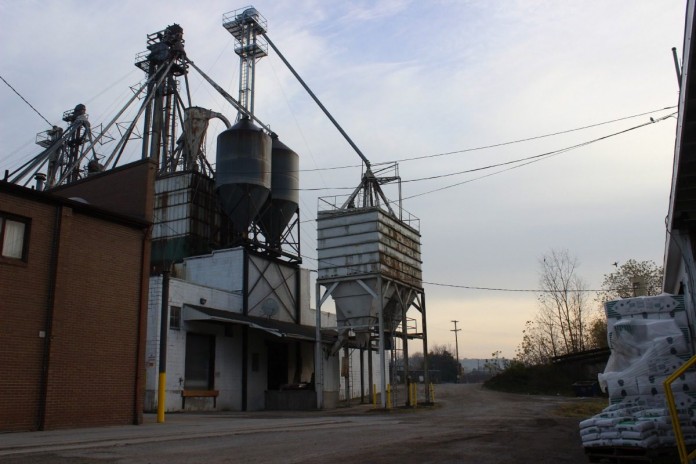SALEM, Ohio — For the third consecutive year, agricultural cooperatives reported record-setting sales numbers in 2013, reflecting a healthy commercial and employment picture.
Marking National Cooperative Month in October, the USDA reports the nation’s farmer, rancher and fishery cooperatives set a new sales record last year, with a total business volume of more than $246 billion.
The local picture
In Ohio, Town & Country Co-op has experienced much the same trend as co-ops nationwide, said Al Holdren, CEO.
“The dollars are bigger — the commodity prices have done that — but we tend to look at units; tons and bushels,” Holdren said. “That has been growing as well.”
The co-op has facilities in West Salem, Wooster, Ashland, Elyria, Grafton, LaGrange, Loudonville, Mansfield, Medina, Norwalk, Seville, Smithville, Sterling and Sullivan.
Membership in the co-op has increased as well in recent years, Holdren said.
“Over the past four or five years, we have had 80 to 100 new members,” he said. “That doesn’t sound like a lot, but it is significant.”
Membership benefits
Holdren said that while members and non-members alike receive the same services, there are distinct advantages to co-op membership, specifically as it relates to co-op patronage.
“We’ve have had big returns in grain in cents-per-bushel, as well as in the agronomy area and in services,” he said. “We’ve been refunding some of that money.”
On the feed side, Holdren said, Town & Country’s customer base is almost entirely dairy and the co-op is able to return members a percentage of its gross profits back in the form of refunds on supplies and grain.
“The biggest we had was two or three years ago when we refunded 21 cents a bushel, half in cash and half in ownership credit,” Holdren said. “Last year, we refunded 4 cents per bushel, all in cash.”
Service is important
Martig Farms in Beloit, Ohio, is a 1,200-head dairy operation that several thousand acres, and a bird feed operation that produces thousands of tons annually.
The Martig family has used the services of Canfield, Ohio-based Agland Co-op, Inc. for decades.
John Martig said the services offered by co-ops are often their most valuable asset.
“We buy all our seed from them, but a lot of people offer that and it’s all the same price, so (co-ops) have to offer a service,” he said. “For example, years ago we used to do our own herbicide spraying. But a co-op rep knows the fields and gets to know the customer. You may pay 5 percent more for the herbicide, but what you are getting is top quality equipment and a really good spread job.
“And when we were spreading lime or pot ash, pot ash was going for $800 a ton. If you sent out a worn-out spreader and put on too much or not enough, it becomes less cost effective than the $8-$10 an acre (the co-op) would charge.”
Business as usual
In a Sept. 30 news release, the USDA pointed out that with generally lower grain and oilseed prices in 2014, a fourth consecutive record-setting sales year is unlikely. However, the release noted, livestock, poultry and dairy producers and their co-ops could benefit from lower feed costs.
Holdren said co-ops must prepare the same way in both up and down economic cycles.
“You can’t really prepare for it — when the rubber hits the road and you go to the fields, you have got to be prepared to offer the same services and give (producers) what they want,” he said. “We have to prepare like any other year.”
The future
Holdren said the age-old economic principle of increased marginal costs, such as agronomy products, leading to diminishing overall returns applies in these instances.
“The big impact of low commodity prices is demand for certain kinds of products,” he said. “For instance, because prices are lower, (producers) may not buy as much fertilizer per acre. When commodity prices are high, it is profitable to invest in things like extra plant food. Of course, you always want to produce as many bushels as you can, (but) when things get lean, you have to lower these marginal costs.”
Martig said area co-ops like Town & Country and Agland continue to be a great benefit to the farmers they serve. But he agreed with Holdren that complacency in a time when grain prices are dropping could be dangerous, particularly for larger co-ops.
“I’m not saying I’m a co-op lover; in some areas, I think they have too much fat,” Martig said. “But in some areas, like research on the agronomy side, they have made huge strides. Agland itself has made great strides in updating equipment and getting control of the East Liverpool port (with its 1999 purchase of the former D.W. Dickey & Son grain facility).
“But they have competition from some of the little guys, like Deerfield Farms right around the corner.”










